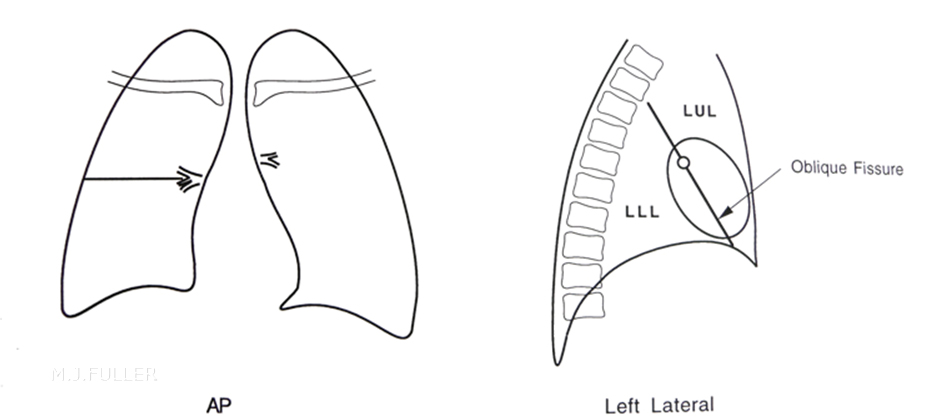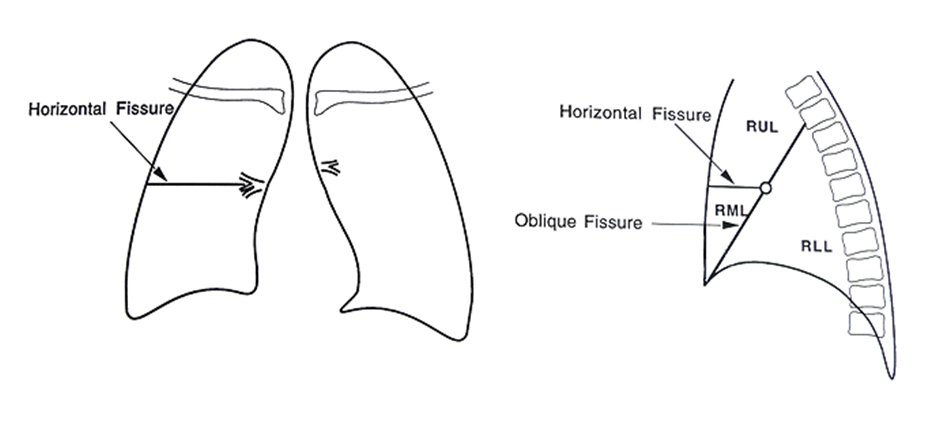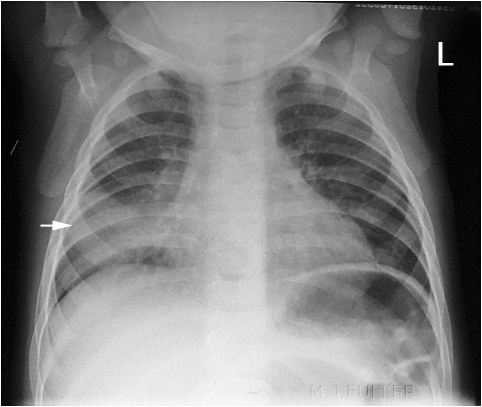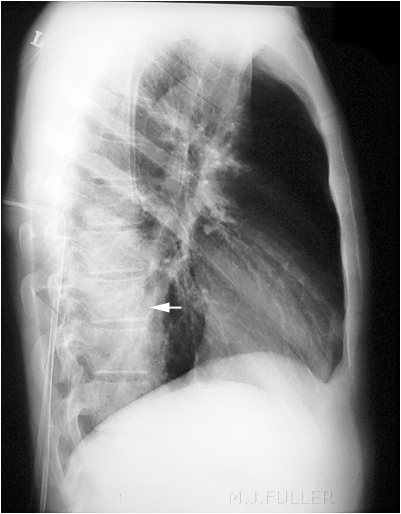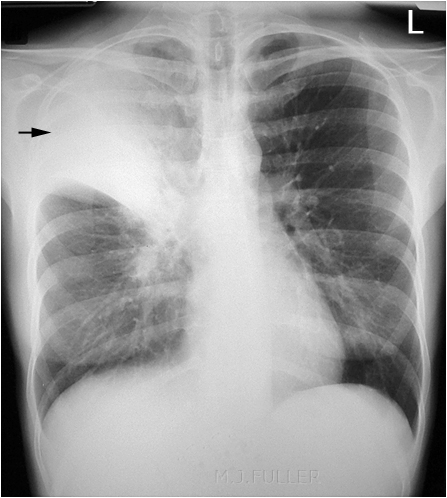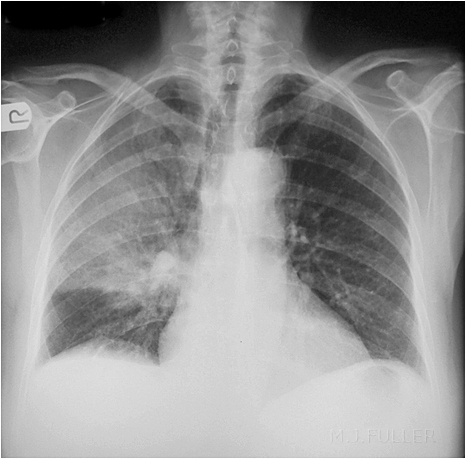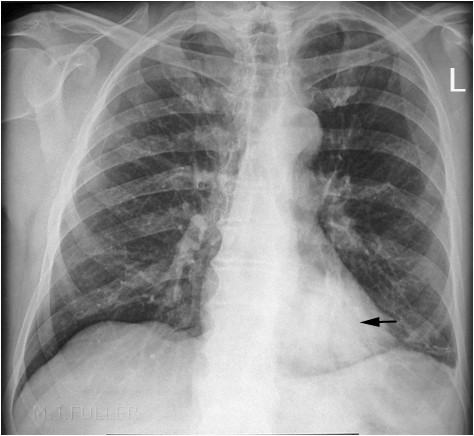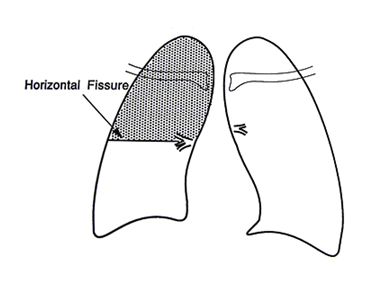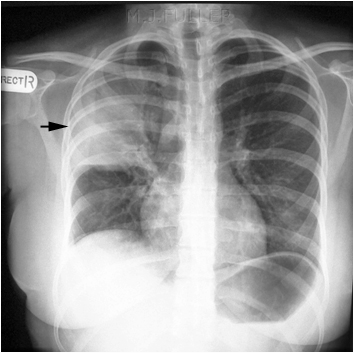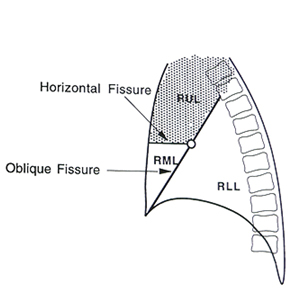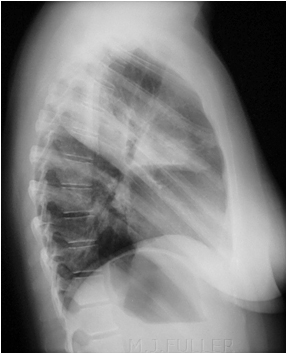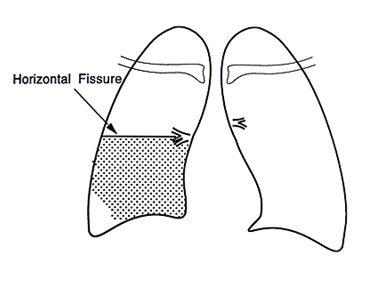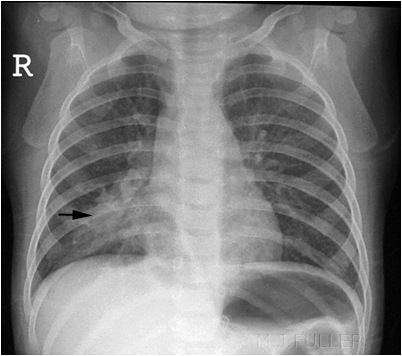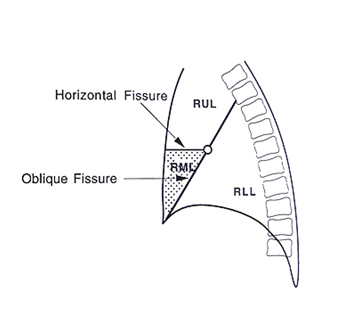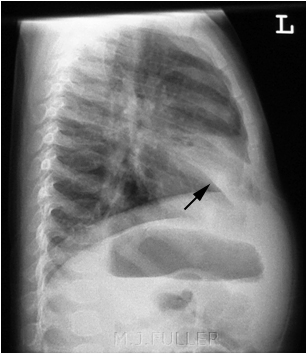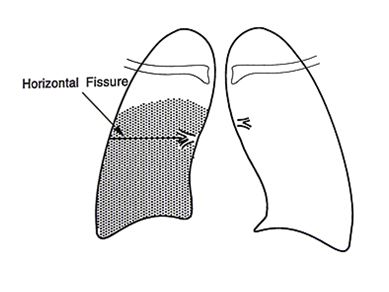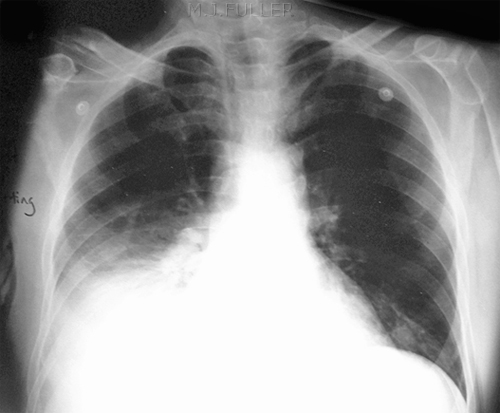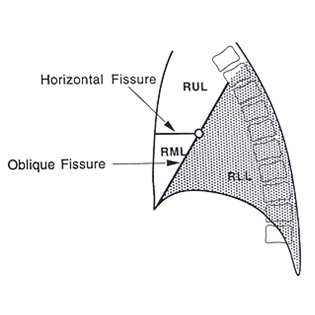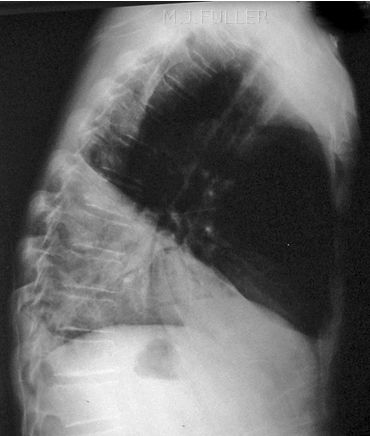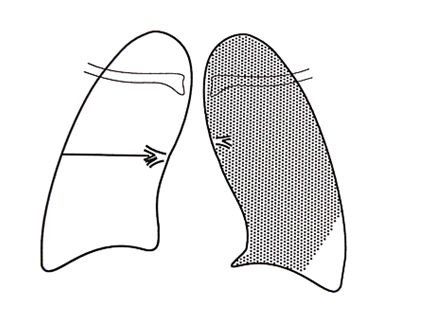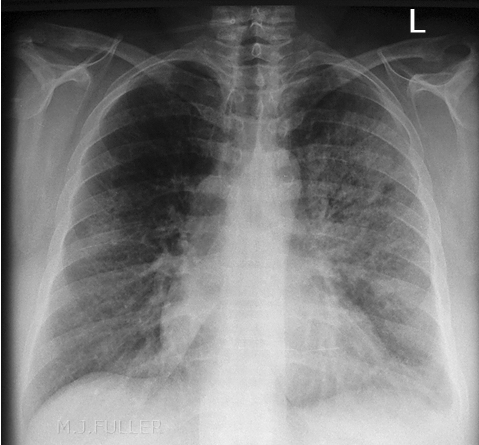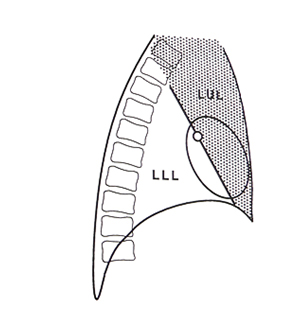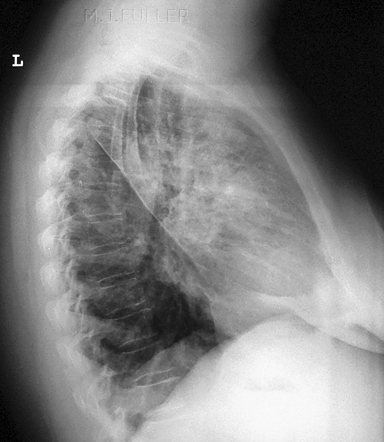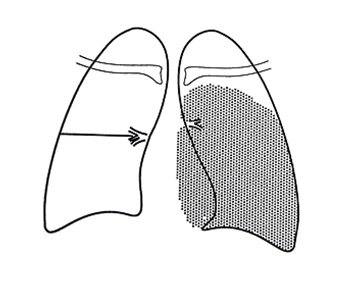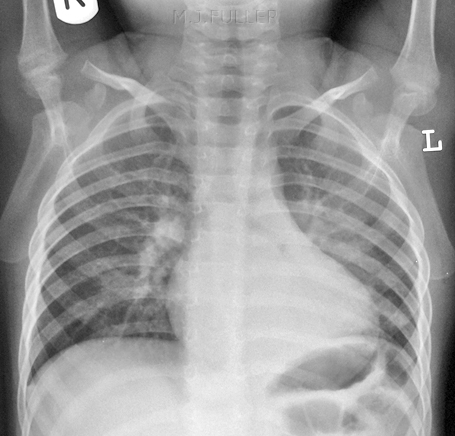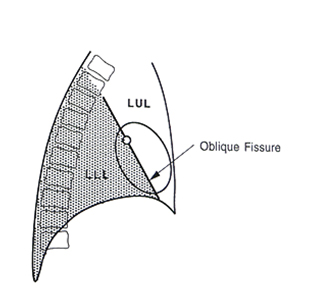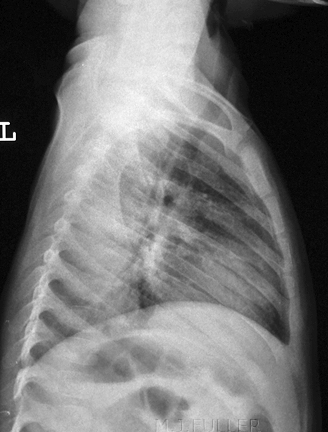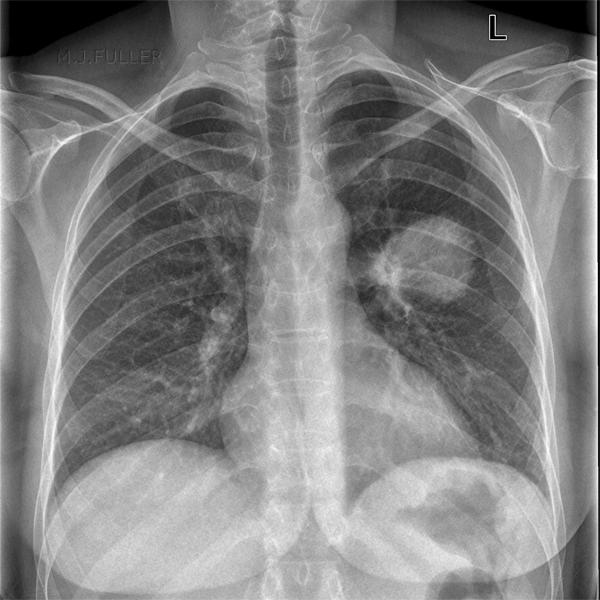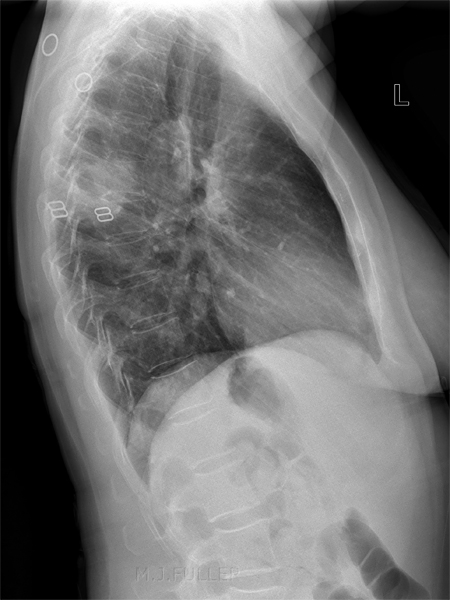Patterns of Consolidation
For those with an interest in plain film image interpretation, patterns of collapse and consolidation are a very good place to start learning. Plain film chest interpretation is something of a holy grail for radiographers. It might appear to be too difficult to contemplate, but as with most seemingly insurmountable tasks, if you take it a step at a time, you will succeed. This page provides an introduction to the topic.
The Meaning of the Term 'Consolidation'
One of the unfortunate aspects of the term consolidation is that its meaning can be different depending on who is using the term. When a clinician uses the term consolidation, he/she is usually referring to a consolidation associated with acute pneumonia. Thus, the term consolidation and pneumonia have very similar meaning and are almost used interchangeably. Strictly speaking, the term consolidation does not imply any particular aetiology or pathology. Acute pneumonia is the commonest cause but not the only cause of consolidation. (other causes include chronic pneumonia, pulmonary oedema and neoplasm). Thus when a radiologist has reported a chest X-ray examination and notes the presence of consolidation he/she is simply stating that some of the lung airspace has been replaced by a fluid. Sutton, Textbook of Radiology, 2nd ed.,1975,
<embed height="350" src="http://widget.wetpaintserv.us/wiki/wikiradiography/widget/youtubevideo/931dd550c878e17f48c9b80af2d27f80336fa8a8" type="application/x-shockwave-flash" width="425" wmode="transparent"/> This is a basic video that explains consolidation in simple terms
- The term consolidation, when used by a radiologist, does not imply any particular aetiology or pathology. Acute pneumonia is the commonest cause but not the only cause of consolidation. (other causes include chronic pneumonia, pulmonary oedema and neoplasm)
- Consolidation may be complete or incomplete
- The distribution of the consolidation can vary widely.
- A consolidation could be described as “patchy”, “homogenous”, or generalised”.
- A consolidation may be described as focal or by the lobe or segment of lobe affected
Silhouette SignSutton, Textbook of Radiology, 2nd ed.,1975, p325
Silhouette sign is possibly the most important sign in localising a consolidation and is similarly important in identifying the presence of lung consolidation. The visibility of the borders of thoracic structures such as the heart and diaphragm is dependent on the presence of adjacent air-filled lung. This is not a tricky or sophisticated concept- airfilled lung adjacent to a soft tissue structure like the heart will result in a sharp, clearly defined border between the two structures. This situation may not occur in the presence of any lung disease which causes the airspaces of the lung to fill with fluid- the heart border adjacent to the diseased lung may become obliterated if there is no adjacent air-filled lung to define it.
Anatomy
Patterns of collapse and consolidation can definitely not be learned without learning lung anatomy first.
Left Lung
The left lung has •1 fissure•2 lobes
Right Lung
The right lung has •2 fissures•3 lobes
Plain Film Appearances of Lung Consolidation
Radiological appearances common to all lobes are:
1.Abnormal lung opacity2.Increase in the size and number of lung markings3.Loss of clarity of the diaphragm on the AP and/or lateral views4.Loss of clarity of the heart border on the AP and/or lateral views5.Air bronchogram lines6.Loss of the normal darkening inferiorly of the thoracic vertebral bodies on the lateral view7.Opacification of the lung behind the heart shadow or below the diaphragms
.2.Increase in the size and number of lung markings
.3.Loss of clarity of the diaphragm on the AP and/or lateral views----->
.4.Loss of clarity of the heart border on the AP and/or lateral views
.5.Air bronchogram lines
.6.Loss of the normal darkening of the thoracic vertebral bodies on the lateral view ----------->
.7.Opacification of the lung behind the heart shadow
NotesOn a lateral chest X-ray image, the thoracic vertebral bodies should appear to darken evenly as you look down the image. This image shows the vertebral bodies become lighter as you move down the image (arrowed). This is caused by consolidation within the left lower lobe. Note also that the right hemidiaphragm is clearly seen and the left hemidiaphragm is only visualised anteriorly (silhouette sign)
Benjamin Felson (<a class="external" href="http://www.amazon.com/Chest-Roentgenology-Benjamin-Felson/dp/0721635911/ref=sr_1_2?ie=UTF8&s=books&qid=1252240078&sr=1-2" rel="nofollow" target="_blank">Chest Roentgenology, W.B. Saunders, 1973, p24</a>) notes that "Equal or greater density of the lower vertebal bodies indicates a pathologic process, even if it is otherwise invisible...".
Right Upper Lobe (RUL) Consolidation
Right Middle Lobe (RML) Consolidation
Right Lower Lobe (RLL) Consolidation
Left Upper Lobe (LUL) Consolidation
Left Lower Lobe (LLL) Consolidation
A special case of consolidation is known as round pneumonia. This is where there has been a focus of infection in the lung with local spread.
...back to the Applied Radiography home page
